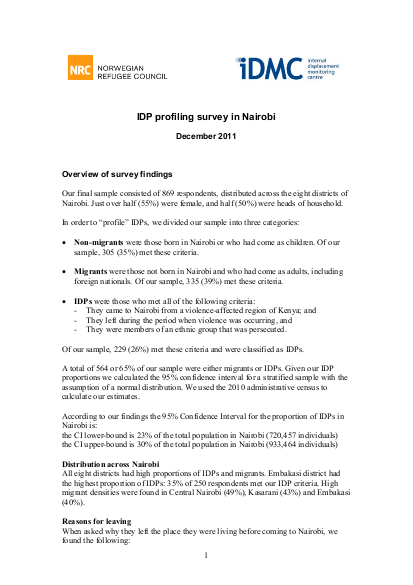
The study showed that differences between IDPs and migrants are small when it comes to their experience in Nairobi, but quite different from that of non-migrants. IDPs and migrants had lower levels of education than non-migrants and were less likely than non-migrants to live in a freestanding house. On the other hand, we found that IDPs were more likely than migrants or non-migrants to live in high-risk areas and less likely to own their dwelling as well as items such as television, radio, computer and to have access to electricity.
With regard to living experience in the city, we found no statistically significant differences between the experience of IDPs, migrants and non-migrants of being forced to move within Nairobi because of evictions. On the other hand, our measures of people’s experience and attitudes suggest that IDPs and migrants’ social capital is much lower than that of non-migrants. As mentioned, however, these indicators were very blunt measures. Further analysis of the findings presented in this report can be found in the study carried out by ODI and IRC entitled “Sanctuary in the city: Urban displacement and vulnerability in Nairobi”25.
Resource collections
- Accountability to affected populations (AAP)
- UN Habitat - Urban Response Collection
- Urban Response - Urban Crisis Preparedness and Risk Reduction
- Urban Response Collection - Community Engagement and Social Cohesion
- Urban Response Collection - Economic Recovery
- Urban Response Collection - Environment and Climate Change
- Urban Response Collection - Housing, Land and Property
- Urban Response Collection - Urban Crisis Response, Recovery and Reconstruction
- Urban Response Collection - Urban Resilience